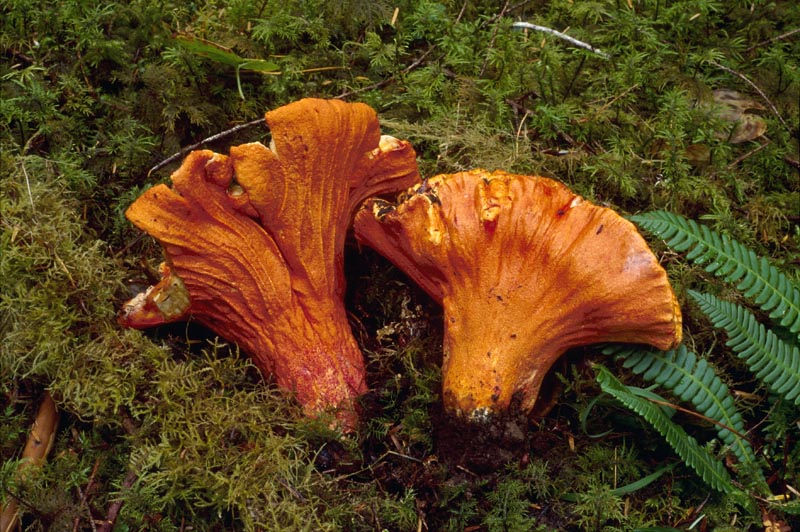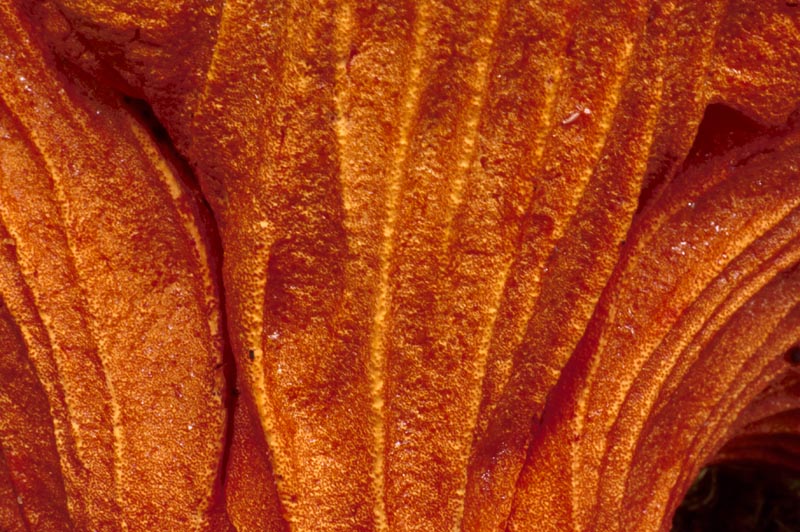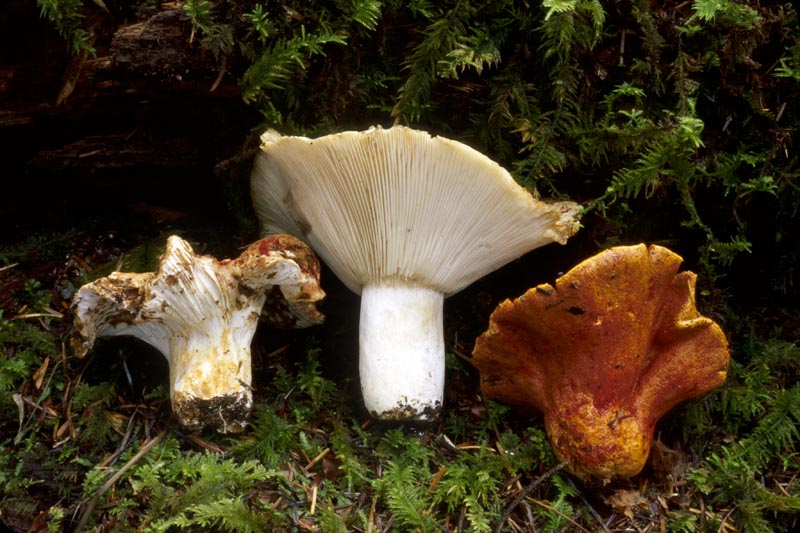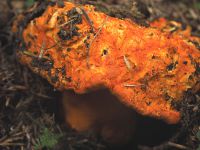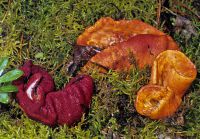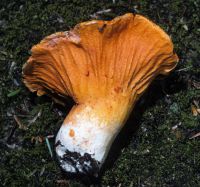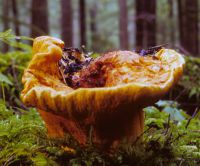Distribution: Broad Broad
Substrate: Hypomyces lactifluorum, the lobster mushroom, grows in the tissue of certain russulas and lactariuses in the PNW, especially R. brevipes, and turns the host mushroom into a dense mass of mummified tissue.
Conservation Status: Not of concern
Edibility: Lobster mushrooms are edible and can often be found at PNW produce stands and farmers’ markets. The warnings against eating them usually are based on the assumed uncertainty of the host mushroom’s identity. However, we are not aware of any serious poisonings caused by it.
Lobster mushrooms are edible and can often be found at PNW produce stands and farmers’ markets. The warnings against eating them usually are based on the assumed uncertainty of the host mushroom’s identity. However, we are not aware of any serious poisonings caused by it.
The surface of the mushroom becomes bright orange and the gills are reduced to low blunt ridges. At maturity, the minute, reddish-orange, flask-shaped fruiting structures of the hypomyces develop on the surface of the mushroom (use handlens). The flesh of the host usually remains white and brittle. H. luteovirens (= H. tulasneanus Plowright) is another parasite of russulas and lactariuses, typically developing over the gills as an olive yellow to dark olive green mold, eventually producing sexual reproductive structures.
PNW Herbaria: Specimen records of Hypomyces lactifluorum in the Consortium of Pacific Northwest Herbaria database
CalPhotos: Hypomyces lactifluorum photos

